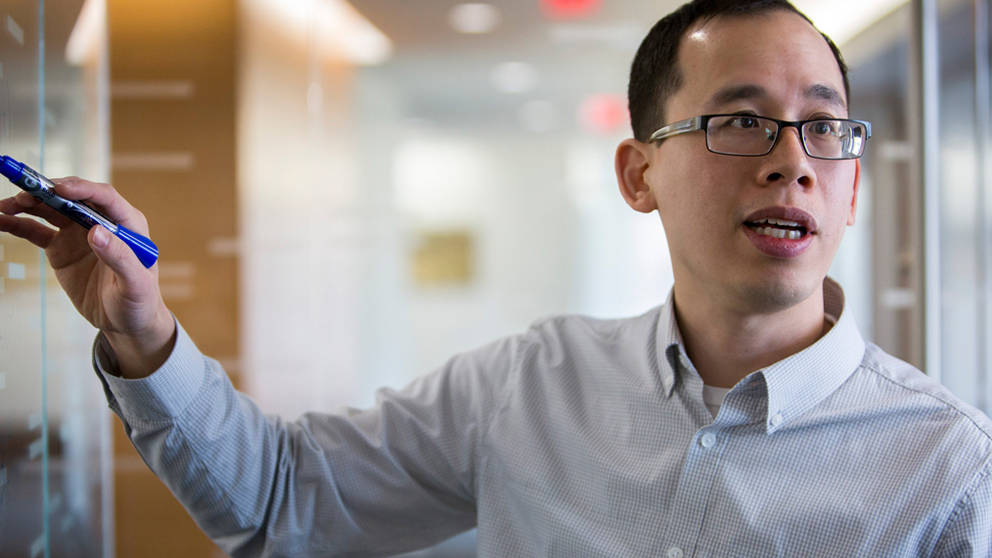
Patient-derived xenograft (PDX) mouse models are developed by taking tumor tissue from human patients and engrafting it in immunocompromised mice.
If the engraftment is successful, the tumor can be grown, divided and passaged through mice multiple times. PDX models therefore provide researchers with the ability to work with tumors directly from patients within a living (in vivo) system, making them a preeminent platform for preclinical cancer research.
Mice are not exactly the same as humans, however, so the validity of PDX models for therapy testing needs to be rigorously tested. One concern has been whether the mouse microenvironment introduces selective pressures that are different from those in humans, causing PDX tumors to adapt and change in ways not found in patients. To investigate this and other potential issues, the National Cancer Institute (NCI) established the PDX Development and Trials Centers Research Network (PDXNet) Consortium, a large, multi-institutional collaborative team working to ensure that PDX experimental data can effectively inform subsequent clinical trials. PDXNet members include The Jackson Laboratory, Seven Bridges Genomics, MD Anderson, the Wistar Institute, Huntsman Cancer Institute, Baylor College of Medicine, Washington University, the University of California – Davis, and the National Cancer Institute Patient-Derived Models Repository.
Cancer’s genomic evolution
Recent studies have yielded conflicting conclusions about whether the PDX engraftment process causes the tumors to evolve, especially in ways that could affect their suitability for testing treatments. One particular concern has been copy number alterations (CNAs). CNAs are a genomic disruption frequently found in cancer, in which the number of gene copies in cancer cells differ from the usual two. It makes sense: many copies of a gene that promotes cell growth and division can initiate cancer. Conversely, one or no functional copies of a protective gene can have the same outcome. And as cancers grow and adapt to their microenvironments, they can acquire additional CNAs that affect their adaptability and viability.
To resolve the questions raised by these studies, an international team led by Jackson Laboratory (JAX) Associate Professor Jeffrey Chuang, Ph.D., Computational Scientist Xingyi Woo, Ph.D., and involving collaborators from both the PDXNet and European-based EurOPDX consortia exhaustively analyzed a large number of PDX and matched patient tumor samples from more than 500 PDX models. In “Conservation of copy number profiles during engraftment and passaging of patient-derived cancer xenografts,” published in Nature Genetics, the team conclusively shows that CNAs are similar between patient and PDX tumors, indicating that copy number evolution is not aberrantly driven by the mouse host environment.
It takes a cancer research team
Previous studies had used PDX gene expression arrays as the basis for their conclusions. For their analyses, Chuang and the team used an additional four sources of data: single nucleotide polymorphism (SNP) arrays, whole-exome sequencing, whole-genome sequencing, and RNA sequencing. The 1,451 unique PDX samples represented 16 tumor types obtained from American, European and Asian cancer patients. The samples also included 328 that had undergone multiple passages or had varying lineages from initial engraftment in different mice.
“Because we were working as part of the PDXNet consortium, we were able to analyze a larger collection of PDX models than we have had access to before,” says Woo, who also managed the data collaboration with EurOPDX. “And across the large number of samples, we found that the differences in CNAs were small, similar to the variation seen in patients. Also, in sample to sample and passage to passage, we saw no changes associated with genes specifically related to cancers and treatment.”
The benefit PDX research gives to cancer patients
The results bolster the value of both the PDX model system and the ability to collaborate across institutions.
“This collaboration among PDXNet, EuroPDX and our partners has demonstrated not only how a fantastic amount of complex cancer data can be generated, but also how it can be jointly shared and understood,” says Chuang. “As a result, we’re able to conclude with confidence that mouse-driven CNA evolution is not a problem. PDX models are stable, and they offer a good representation of what’s found in patients.”
The findings are particularly important for working toward the true goal of the PDXNet effort: patient benefit.
“The PDXNet is working with the National Cancer Institute now to translate PDX studies to clinical trials,” says Chuang. “And our study has helped to confirm that PDX is the best preclinical system we have for testing new therapies at this point.”